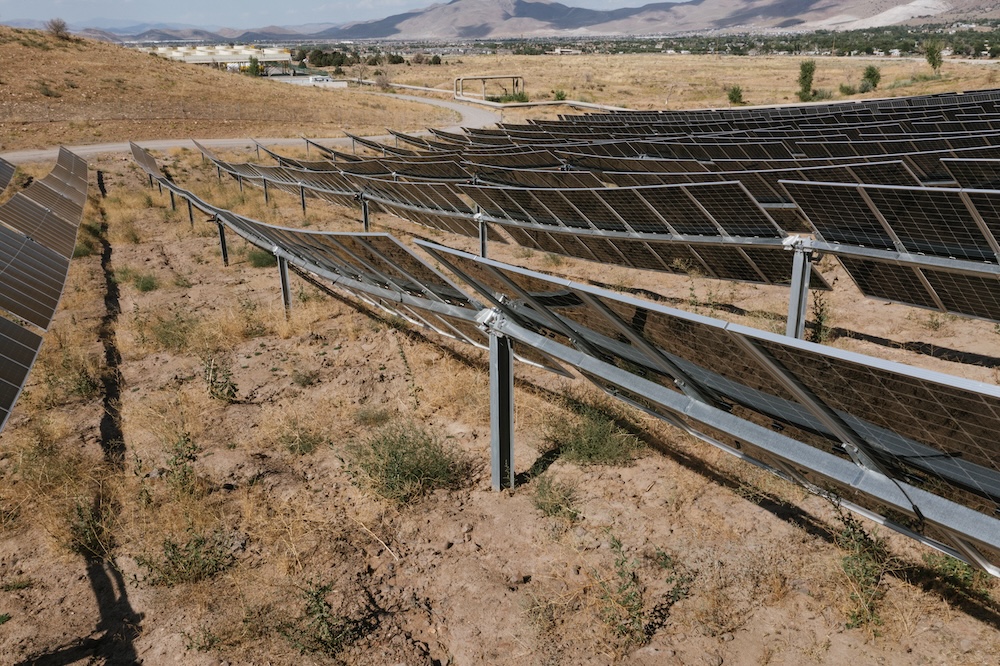For solar engineering, procurement, and construction firms (EPCs), getting projects over the finish line as efficiently as possible is a top priority. Unfortunately, many factors can hold up construction timelines for utility-scale solar projects, including permitting delays, sourcing issues, skilled labor shortages, and more. Thankfully, Nevados developed the All Terrain TrackerⓇ (ATTⓇ) to streamline large-scale solar panel installation in several ways. Keep reading to discover how this all terrain tracker can help your utility-scale solar EPC build faster.

1. Eliminates Grading
Without a doubt, grading is one of the most labor-intensive and time-consuming tasks in installing a solar power plant. The process involves excavating and moving soil to level the ground. Moreover, mass grading involves constructing retention ponds to manage runoff and reseeding to restore ecological balance, which can hold out project closeouts and cost more money. Depending on the project size, grading can take several months to complete. Worse, the grading project can attract lawsuits or public outcry when done incorrectly. In such an unfortunate event, a utility-scale solar EPC will have to halt the project for years or terminate it altogether. The Nevados ATTⓇ helps utility-scale solar EPCs bypass the need for grading, so they avoid the setbacks associated with the task. The tracker can handle post-to-post angle changes of up to 26% and overall slopes of up to 37% in any direction. As such, utility companies won’t have to do any grading to achieve optimal solar panel positioning.2. Reduces Permitting Requirements
Before starting mass grading, government authorities must give utility-scale solar EPCs the green light. Mostly, the agencies need plans that showcase how a solar EPC will manage wastewater from the site and stabilize the soil during and after installation. The permitting process can take months or years to complete since authorities must ensure that a solar EPC can comply with environmental regulations and land use policies. At times, securing a permit from government agencies might not be enough to launch grading, as communities are usually vigilant against projects that can degrade their environment. As a result, the community can oppose a utility-scale project if it entails mass grading and clearing of vegetation. Nevados’ All Terrain TrackerⓇ eliminates the need for mass grading, often the primary cause of rigorous permitting standards and community resentment. As such, with the tracker, a utility-scale solar EPC is likely to have an easy time securing permits and community approval.3. Has Generous Installation Tolerances
The same features that allow the ATTⓇ to adapt to rugged terrain also give it generous installation tolerances regarding the angle, rotation, and height of the tracker.- Flexible cradle: The torque tube cradles on either side of the ATTⓇ bearing can flex up to 2.5 degrees, totaling 4.4% tolerance across the whole bearing.
- Torque tube engagement: Within the cradle, each torque tube has a roughly 1.5” window of engagement for the north/south direction.
- Hinged bearing: (Articulating bearing version only) As the name implies, the articulating bearing can flex on both sides of the cradle to adapt to steep angle changes.
- Pivoting support bolts: The articulating bearing also features two pivoting support bolts around the cradle that affix it to the pile, allowing for more flexible installation tolerances.
Build Faster With Nevados ATTⓇ
Quick turnaround times are valuable for any utility-scale solar EPC. The Nevados ATTⓇ ensures solar EPCs complete projects on time, so they can take advantage of the demand for solar power. Designed with optimizing construction times in mind, it eliminates the need for grading, one of the most time-consuming processes. Moreover, it reduces complexities like community resentment and environmental disruption, which prolong permitting and delay the overall project. Contact us to learn more about the ATTⓇ and how it can help you on your next project.



